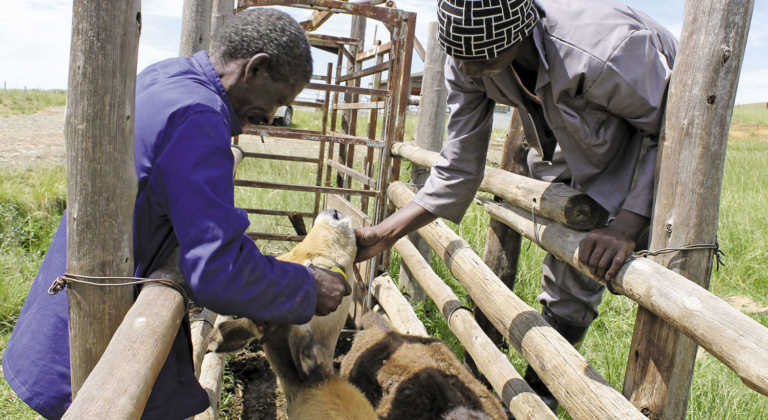
Antibiotics are used to treat illnesses and infections; vaccinations are used to prevent livestock from contracting diseases.
Unfortunately, even communal farmers who know the importance of vaccines often consider it too expensive to vaccinate all of their animals.
This is unwise. The R5 or R6 it might cost to vaccinate a lamb is cheap if the lamb survives to adulthood and produces wool or offspring for many years.
“Vaccines are like a training course for the immune system,” explains the website Livescience.com.
They introduce weakened germs into the body, forcing the immune system to create antibodies that protect the body from future infection.
All adult livestock should be vaccinated at least once a year, and ideally they should receive a booster vaccination four weeks later to strengthen the immune system even further.
Cows and ewes will pass immunity on to their offspring via their milk; this immunity lasts for six to eight weeks.
Vaccinating: the most important points
- Vaccinate lambs at six to eight weeks, and give a booster vaccination about four weeks later. Vaccinate calves at eight to 12 weeks, with a booster at weaning (about eight months of age).
- If you can, avoid dosing calves or lambs with a worm remedy before they have had their first vaccination; rather administer the worm remedy two weeks later.
- Keep records of your vaccinations and set yourself a reminder for booster vaccinations.
- Keep vaccines refrigerated and out of direct sunlight. Never use vaccines that have expired (the expiry date is usually printed on the packaging).
Multi-action vaccines:
Ideal for communal areas
Many communal farming areas lack boundary fences, enabling roaming animals of unknown health status to spread disease. It’s therefore important to use a multi-action vaccine rather than one that treats only a single livestock disease.
Different brands of multi-action vaccines cover the seven most prevalent livestock diseases in South Africa; ask about these at your local co-op or livestock medicine dealer.
Bear in mind, though, that diseases such as bluetongue and Rift Valley fever, which can be fatal to livestock, particularly sheep, are usually not covered by multi-action vaccines.
If these diseases are prevalent in your region, ask for advice on how to vaccinate your animals against them, as some of these diseases may be dangerous to humans.
Two other diseases not usually covered in multi-action vaccines and therefore requiring specific vaccines are:
- Caseous lymphadenitis (CLA). This causes abscesses and infected glands in sheep and goats.
- Pulpy kidney. Lambs fed on concentrated feed or running on good-quality green pastures are more at risk of contracting this disease. So, in addition to their initial vaccinations, consider giving lambs a further single-action vaccine to combat pulpy kidney every three to four months.
Make sure you understand what to do; ask if you’re unsure
Always read the administration instructions very carefully. If you’re unable to understand them, ask for advice when buying vaccines.
Never reuse syringes or needles after having administered vaccines or any other medication to visibly sick or weak animals. Sterilise them in boiling water for at least 15 minutes, or use disposable syringes and needles.
Do not stop using medications or dips intended to control parasites while vaccinating your animals.
Sources: Pappas, S. (2010). ‘How do vaccines work?’ Retrieved from www.livescience.com; ‘How vaccines work’. (2018). Retrieved from vaccineinformation.org.










